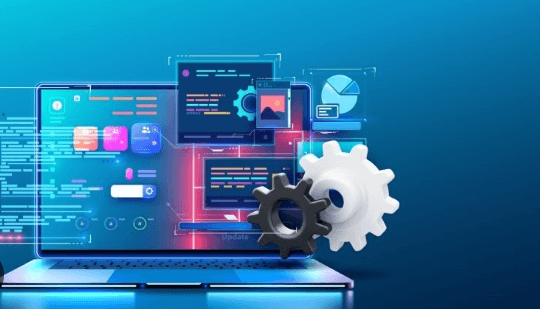The Evolution of Learning in the Digital Age
Education has experienced a major transformation in the last two decades with the integration of technology into teaching methods. The Learning Management System, commonly known as an LMS platform, stands at the forefront of this revolution. It serves as a centralized hub where educators can create, distribute, and manage educational content while allowing learners to access materials at their own pace. The rise of online learning has fueled the demand for flexible systems that cater to diverse needs and learning styles. As a result, lms platform have become the backbone of e-learning in schools, universities, and corporate environments alike.
The shift from traditional classrooms to digital learning environments has not only increased accessibility but also reshaped the way knowledge is consumed. Learners today expect instant access to information and interactive content that engages them beyond static textbooks. LMS platforms provide this experience through multimedia integration, assessments, discussion forums, and personalized learning paths. This evolution demonstrates how technology continues to democratize education by breaking down geographical and economic barriers while offering scalable solutions for all levels of learning.
Key Features That Drive LMS Platforms Forward
An LMS platform is much more than a repository of digital content—it is an intelligent ecosystem designed to enhance engagement, communication, and performance tracking. Some of the most powerful features include course creation tools, progress tracking, gamification, and integration with third-party applications. These elements make it easier for instructors to manage classes and monitor learner progress in real time. For instance, automated grading systems save educators countless hours, while built-in analytics help identify students who may need additional support.
Another defining feature of modern LMS platforms is their adaptability. They support a wide variety of content formats such as videos, quizzes, live webinars, and interactive assignments. Furthermore, many platforms are mobile-friendly, allowing learners to study anytime and anywhere. This convenience aligns perfectly with modern lifestyles, especially for working professionals and students who need to balance education with other responsibilities. By fostering accessibility and engagement, LMS platforms ensure that learning is not confined to a specific time or place but becomes an ongoing experience.
See also: Effective Study Techniques for Students of All Ages
The Role of LMS Platforms in Corporate Training and Development
In the corporate world, LMS platforms have redefined how organizations train and upskill their employees. Traditional classroom-based training often requires travel, scheduling, and significant expenses, whereas an LMS platform streamlines the entire process online. Companies can now deliver onboarding, compliance, and leadership training through customizable learning modules. This approach not only saves time and money but also ensures consistent learning experiences across departments and global locations. The scalability of LMS platforms allows enterprises to manage thousands of learners simultaneously while tracking their performance through analytics dashboards.
Employee engagement is another critical area where LMS platforms shine. Gamification features like badges, leaderboards, and progress rewards motivate learners to participate actively. Moreover, personalized learning paths empower employees to take charge of their professional development by choosing courses that align with their career goals. Many organizations also integrate social learning features, enabling collaboration and peer-to-peer knowledge sharing. This blend of structure and flexibility transforms corporate learning into a dynamic process that promotes both skill development and employee satisfaction.
How LMS Platforms Support Educational Institutions Worldwide
For schools and universities, the LMS platform has become an indispensable tool that complements both online and hybrid learning models. It allows educators to organize lesson plans, assignments, and assessments efficiently while providing students with a structured learning path. Features such as discussion boards, chat rooms, and collaborative projects foster a sense of community, even in virtual environments. The ability to upload multimedia resources, including videos, slides, and readings, enhances comprehension and accommodates different learning preferences.
Furthermore, LMS platforms offer powerful data insights that help educators measure learning outcomes more effectively. Administrators can track course completion rates, attendance, and engagement levels to refine their teaching strategies. In addition, these platforms facilitate communication between teachers, students, and parents through automated notifications and progress reports. With remote learning becoming a norm, especially after global disruptions like the COVID-19 pandemic, LMS platforms have proven their value in maintaining continuity and quality in education. They have effectively bridged the gap between physical classrooms and virtual learning spaces, creating a sustainable model for future education.
The Future Landscape of LMS Platforms and Emerging Innovations
The next generation of LMS platforms is expected to integrate even more advanced technologies, such as artificial intelligence, machine learning, and virtual reality. AI-powered recommendation systems can personalize learning paths based on user behavior and preferences, ensuring that each learner receives tailored content. Machine learning algorithms can predict performance trends and identify at-risk learners before they fall behind, enabling proactive intervention by educators. Virtual and augmented reality are also reshaping immersive learning, particularly in technical and medical training, where real-world simulations enhance understanding and skill acquisition.
Another major trend shaping the future of LMS platforms is interoperability. As organizations and institutions adopt various tools and software, the need for seamless integration grows. Cloud-based LMS solutions are evolving to connect effortlessly with HR systems, productivity apps, and content creation tools, making them central to digital ecosystems. Additionally, microlearning—delivering content in short, focused bursts—is gaining popularity for its effectiveness in maintaining learner attention. With these advancements, the LMS platform continues to move beyond being a simple management tool toward becoming a comprehensive learning experience system. This transformation ensures that education and training remain adaptive, data-driven, and engaging for learners of all backgrounds and industries.



